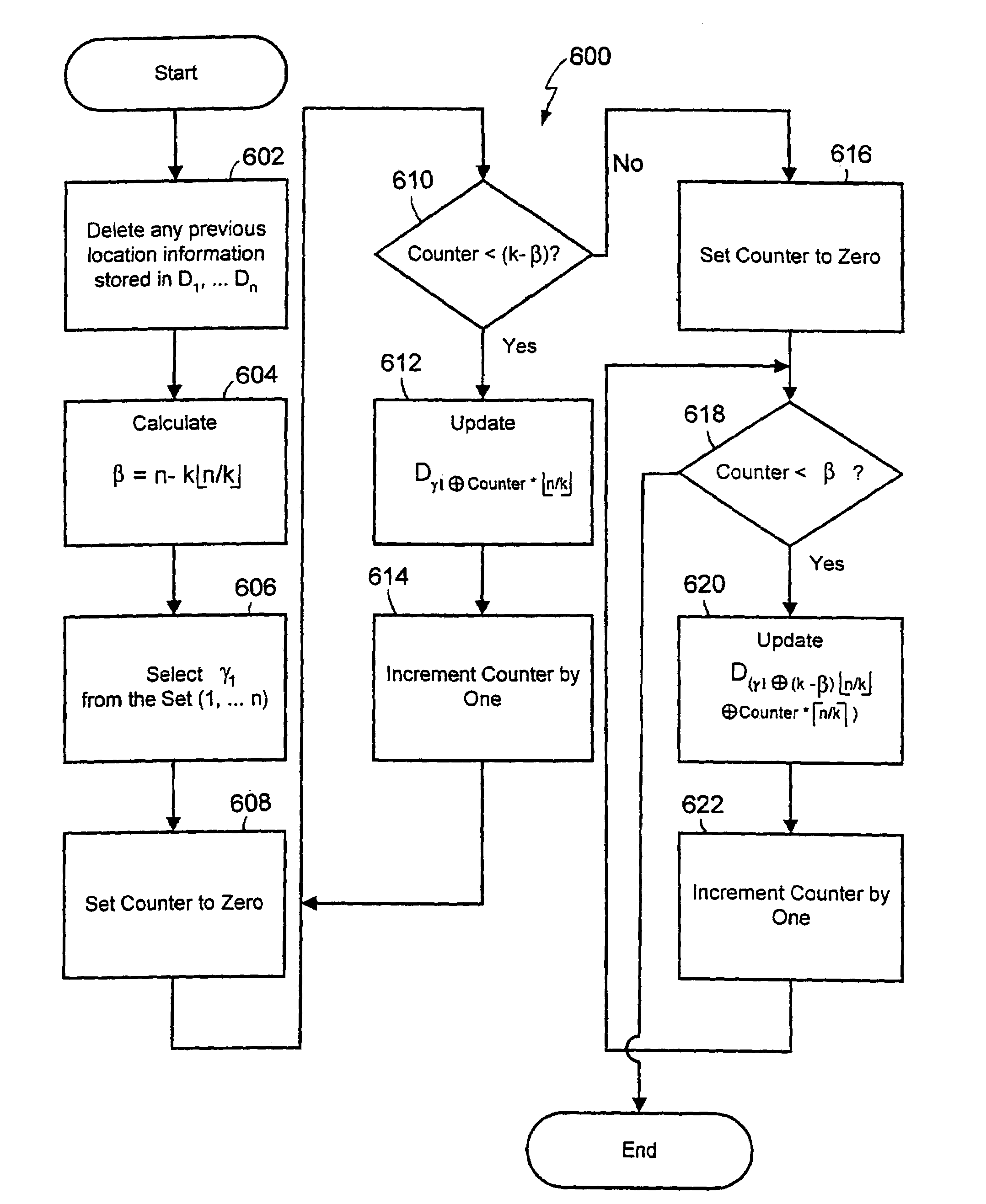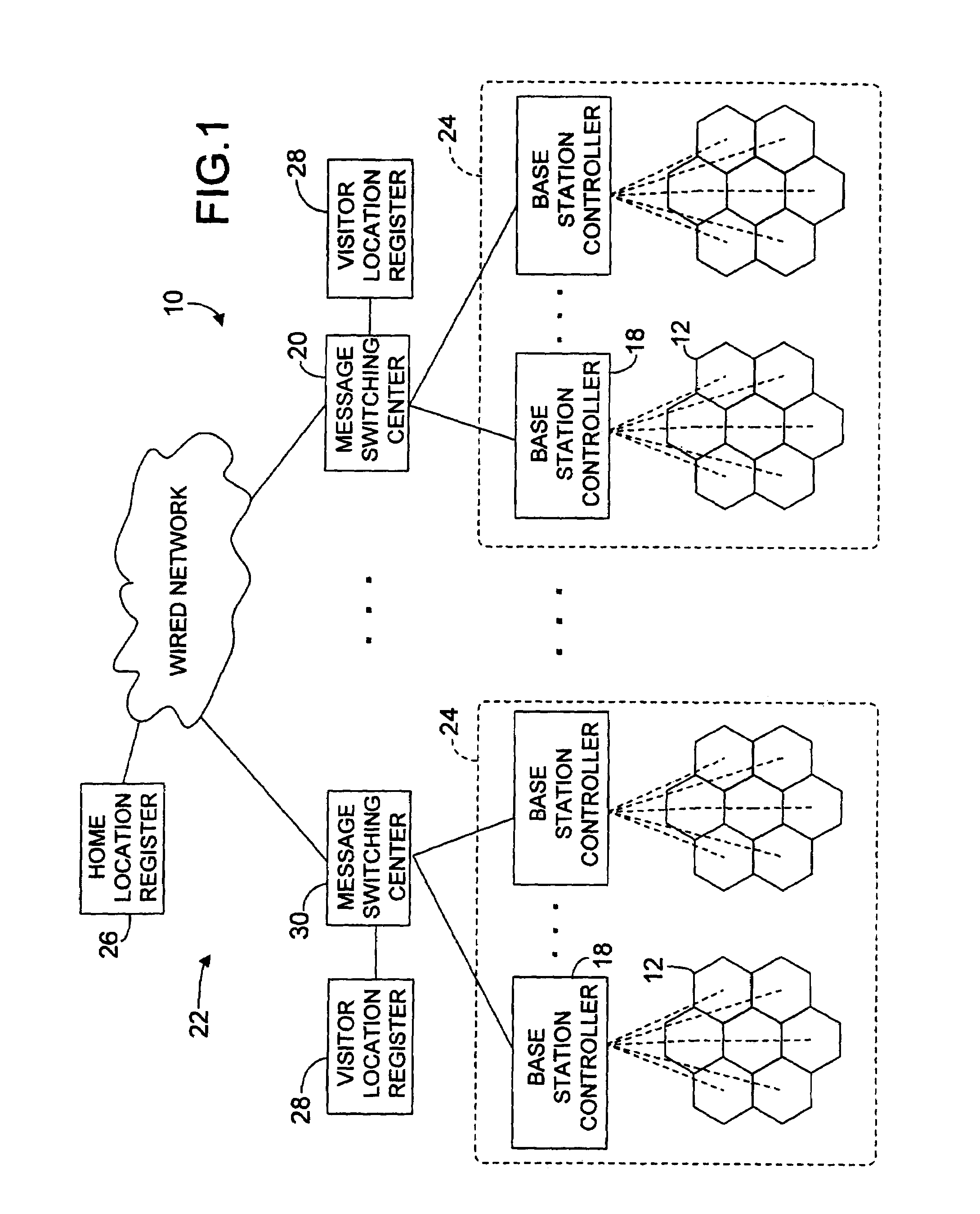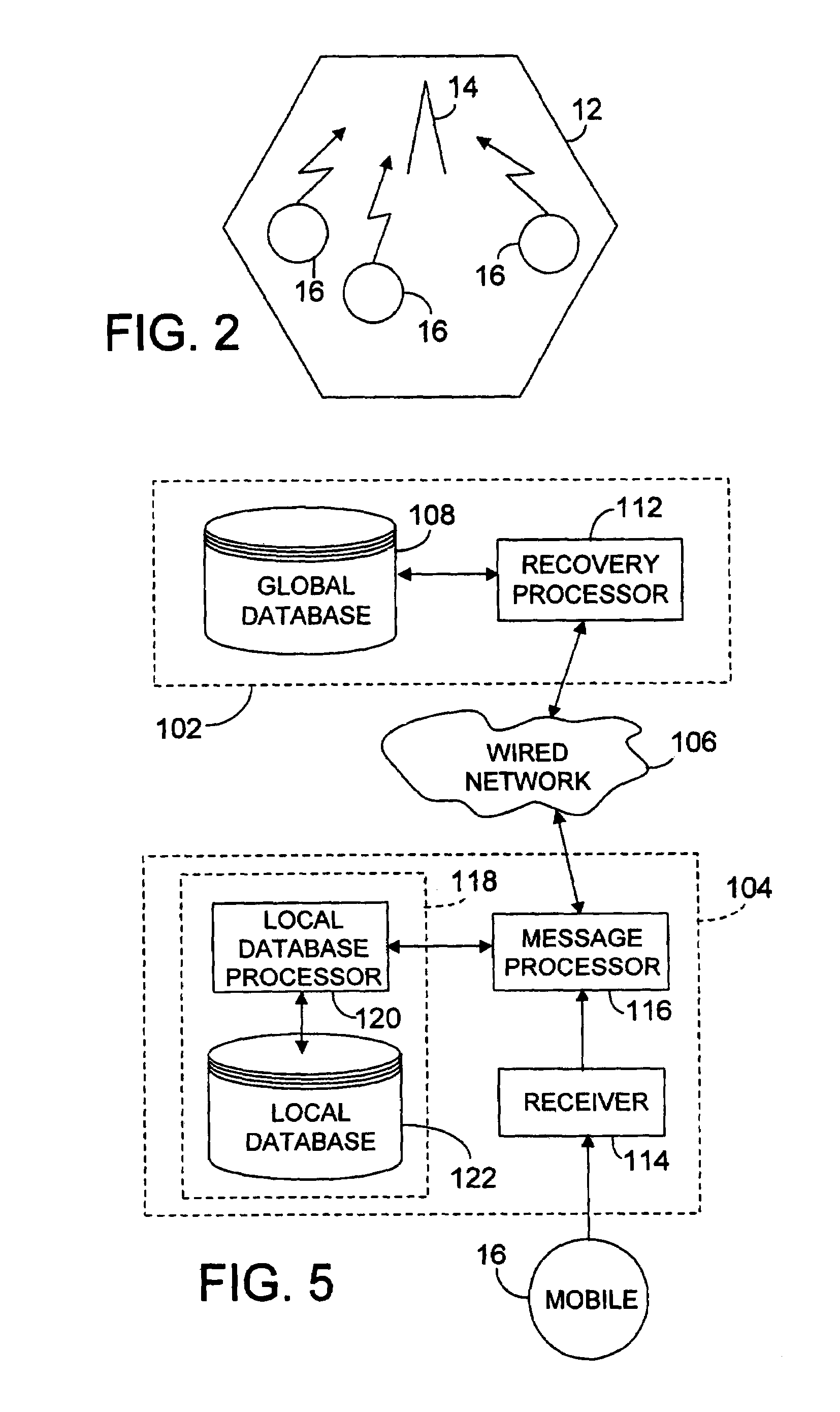Location information recovery and management for mobile networks
a technology for mobile networks and location information, applied in the field of communication networks, can solve the problems of affecting the service quality of mobile networks, the inability to complete calls between two mobiles in different location areas, and the inability to complete calls from a fixed host to a mobile, and achieve the effect of simple implementation
- Summary
- Abstract
- Description
- Claims
- Application Information
AI Technical Summary
Benefits of technology
Problems solved by technology
Method used
Image
Examples
Embodiment Construction
[0042]FIG. 5 is a high-level block diagram showing a location information management and recovery system 100. The location information recovery and management system 100 includes a global database server 102 and a plurality of location update processors 104 (only one of which is shown in FIG. 5). The plurality of location update processors 104 are connected to the global database server 102 via a wired network 106.
[0043]The global database server 102 includes a global database 108 for storing location and service information about a plurality of mobiles 16 (only one of which is shown in FIG. 5) that is sent to the global database server 102 by the location update processors 104. The global database server 102 also includes a recovery processor 112 for receiving, processing, and sending messages. The recovery processor 112 also is operatively connected to the global database 108 so that, for example, location information about the mobile 16 that is received by the recovery processor ...
PUM
 Login to View More
Login to View More Abstract
Description
Claims
Application Information
 Login to View More
Login to View More - R&D
- Intellectual Property
- Life Sciences
- Materials
- Tech Scout
- Unparalleled Data Quality
- Higher Quality Content
- 60% Fewer Hallucinations
Browse by: Latest US Patents, China's latest patents, Technical Efficacy Thesaurus, Application Domain, Technology Topic, Popular Technical Reports.
© 2025 PatSnap. All rights reserved.Legal|Privacy policy|Modern Slavery Act Transparency Statement|Sitemap|About US| Contact US: help@patsnap.com



